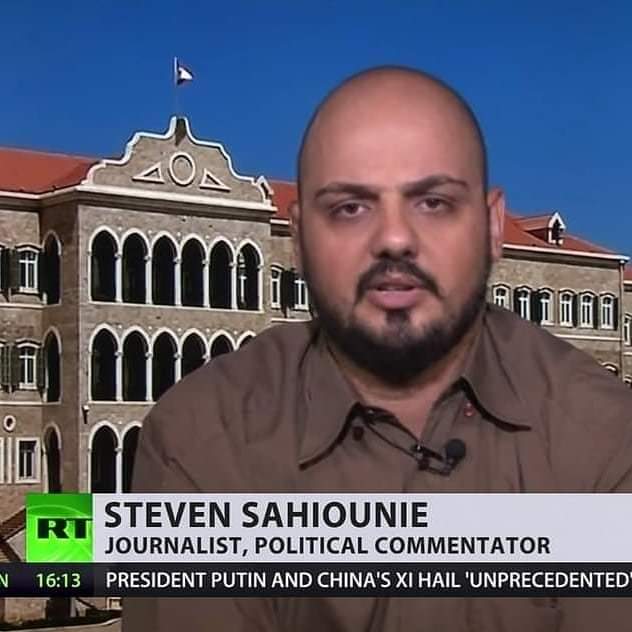By: Steven Sahiounie, journalist and political commentator
The Eastern Mediterranean is no longer just a geopolitical flashpoint-- it is a global energy battleground. From Libya's contested waters to Israel's infrastructure race and Syria's untapped reserves, the region is witnessing a complex struggle for control over the future of gas.
It has been seven months since Syrian President Assad fell, but the country has not yet begun major rebuilding projects. Foreign investors are touted as the likely savior of Syria's collapsed economy. However, Syria has plenty of resources on hand to finance their transformation into one of the most modern countries in the Mediterranean region. The oil and gas, under the ground and off-shore, can be utilized to rebuild ground-zero across the country after 14 years of civil war.
According to the U.S. Geological Survey, the region holds an estimated 122 trillion cubic feet of gas. Syria alone may possess 28.5 trillion cubic meters-- potentially making it the world's third-largest gas exporter after Russia and Iran.
Recently, the largest oil refinery in Syria, at Banias, began fuel shipments for the first time since the fall of the Assad regime. Some have characterized this as the beginning of the Syrian recovery.
Prior to the outbreak of the 2011 civil war, Syria had been producing around 400,000 barrels per day (bpd) of crude oil from proved reserves of 2.5 billion barrels. The highest production rate hit nearly 600,000 bpd, but the output began a decline due to technical deprivations in the major fields. Syria's gas sector was equally significant, with proven reserves of 8.5 trillion cubic feet, and an output of nearly 316 billion cubic feet.
After working with Soviet experts prior to 1965, the General Company for Oil, a Syrian state institution, constructed pipelines from Sweidiyeh, Rumailan, and Karachok to a new terminal north of Tartus. The terminal was near the Homs refinery, with a production capacity of 1.5 million bpd, near to the pipeline moving Iraqi oil from Kirkuk to Banias on the coast, the oil shipment hub.
After 1974, Syria's President Hafez al-Assad contracted companies including Mobil Oil through middle-men, such as Mohamed Makhlouf, Assad's brother-in-law.
The vast discoveries in Omar and Taym fields in Deir Ez Zor, along with Tanf and smaller fields, yielded a light crude superior in density to North Sea Brent. Assad's agreements with the foreign companies allowed companies to claim 12.5% of extracted crude.
Syrian oil production topped 700,000 bpd from Hasaka fields and areas under foreign contracts. Global oil prices had hit their peak in the 1970s, with some markets topping out at $45 per barrel. This vast wealth coming from underground resources should have transformed Syria into a Dubai-look-alike.
US sanctions on the Oil Marketing Office forced the US companies out. When the 2011 war began, production had fallen to 380,000 bpd. The oil field infrastructure was destroyed or looted during the battles, and in the end the US-backed SDF, a Kurdish separatist militia, took possession of the wells in the northeast and held them as their private source of income.
The Syrian central government in Damascus has signed agreements with the SDF to cooperate on the energy fields as well as eventual military unity. Currently, Syria produces 80,000 bpd, with recovery research producing hope to boost capacity to 200,000 bpd, and deals to restore old fields, while exploring new ones.
Experts say Syria has promising areas of exploration in both the oil and gas sectors. Hasaka, Deir Ez Zor and Shaddadi, along with other older fields, are scheduled to be boosted up to 400,000 bpd within 12 months. The yet untapped offshore gas fields are said to be among the world's richest. Deir Atiyah, Qara, Nabek and Qalamoun areas offer promising potential outputs.
In order for Syria to emerge as one of the world's biggest producers, costly investment in infrastructure is necessary. Rebuilding and expanding pipelines, dredging ports to depths required to berth super tankers, and building a third refinery in Raqaa capable to handle 300,000 bpd are among the required expenditures.
The refineries at both Homs and Banias are in desperate need to rehabilitation and refitting.
The price tag for developing fields in Hasaka, Dier Ez Zor, Shaddadi and the Conoco field could easily run into several billion dollars. This is when foreign investment is needed, with the Ministry of Energy and Oil calling for bids that offer protection to Syria, and the foreign companies.
(Note: You can view every article as one long page if you sign up as an Advocate Member, or higher).





